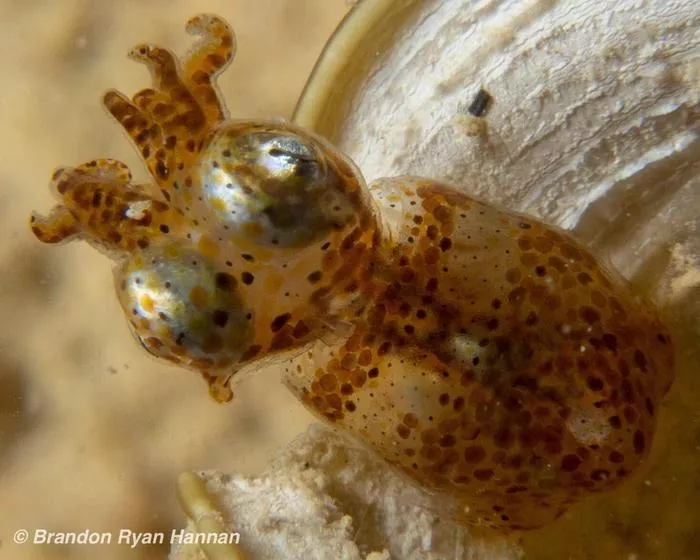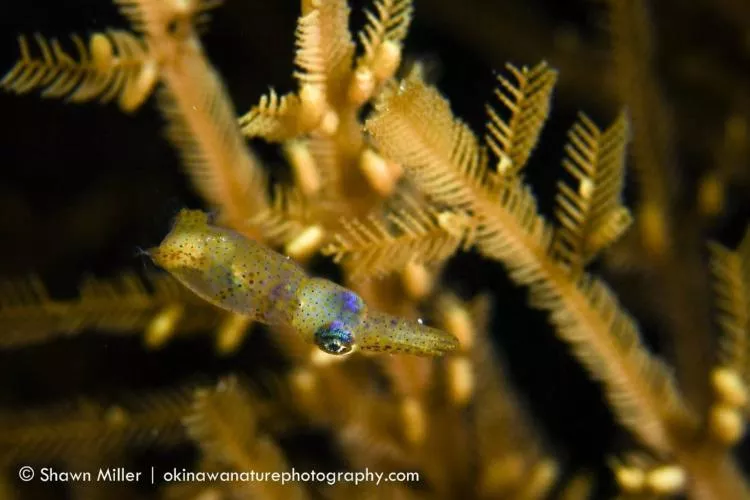Meet two new species of pygmy squid
Two new species of pygmy squid in the waters of Okinawa, Japan have been identified and catalogued, according to a new study.
The deep, emerald waters surrounding Japan's Okinawa Islands are a haven for marine life, and is one of the most biodiverse ecosystems on the planet. Within this vast biodiverse haven, scientists have discovered two new species of pygmy squid lurking beneath the surface: the Ryukyuan Pygmy Squid and Hannan's Pygmy Squid.
These two species have now been described and catalogued, with names that connect them to Japan's cultural heritage. Findings have been published in the Marine Biology journal.
Of forest fairies and grappling predators
The Ryukyuan Pygmy Squid (Idiosepius kijimuna) takes its name from short, red-haired forest fairies believed to reside in Okinawa's banyan trees. Much like their mythical namesakes, they are tiny and possess a vibrant red hue. They spend their days in the shelter of seagrass beds near the coast.
The other species, Hannan's Pygmy Squid (Kodama jujutsu), belongs to a completely new genus. The name "Kodama" is derived from round-headed spirits rumoured to inhabit ancient trees, their presence signifying the good health of a forest.
In addition, the squid's name—"jujutsu"—alludes to its predatory nature, reminiscent of the Japanese martial art of jiu-jitsu. "Jiu-jitsu revolves around grappling and using your opponent’s strength, and the Kodama jujutsu preys on shrimp larger than itself by grappling with its small arms," explained Jeffrey Jolly, from the Marine Climate Change Unit at Okinawa Institute of Science and Technology (OIST).

Needles in oceanic haystack
These fascinating discoveries weren't made without challenges. Both species are tiny, with the largest specimen measuring just 12 millimeters. They are also exclusively active at night, and the Ryukyuan appears only during the winter months, complicating their identification and study.
The project to document and understand these incredible species was a joint effort involving scientists from OIST, their colleagues from Japan and Australia, as well as underwater photographers who captured images of the squids in their natural habitat.
Threats abound
Beyond the tranquil waters of Okinawa, climate change, and human activities like overfishing, land reclamation and soil runoff continue to threaten the delicate ecosystems: these new species of pygmy squids, as well as many other marine species, face a precarious future.
For Jolly, these new findings underscore the importance of taxonomy: “Taxonomy is not as flashy as other sciences, but through naming and characterizing species, it both highlights the amazing diversity of life in the oceans, and it is a reminder that there is so much that we don’t know yet.”































